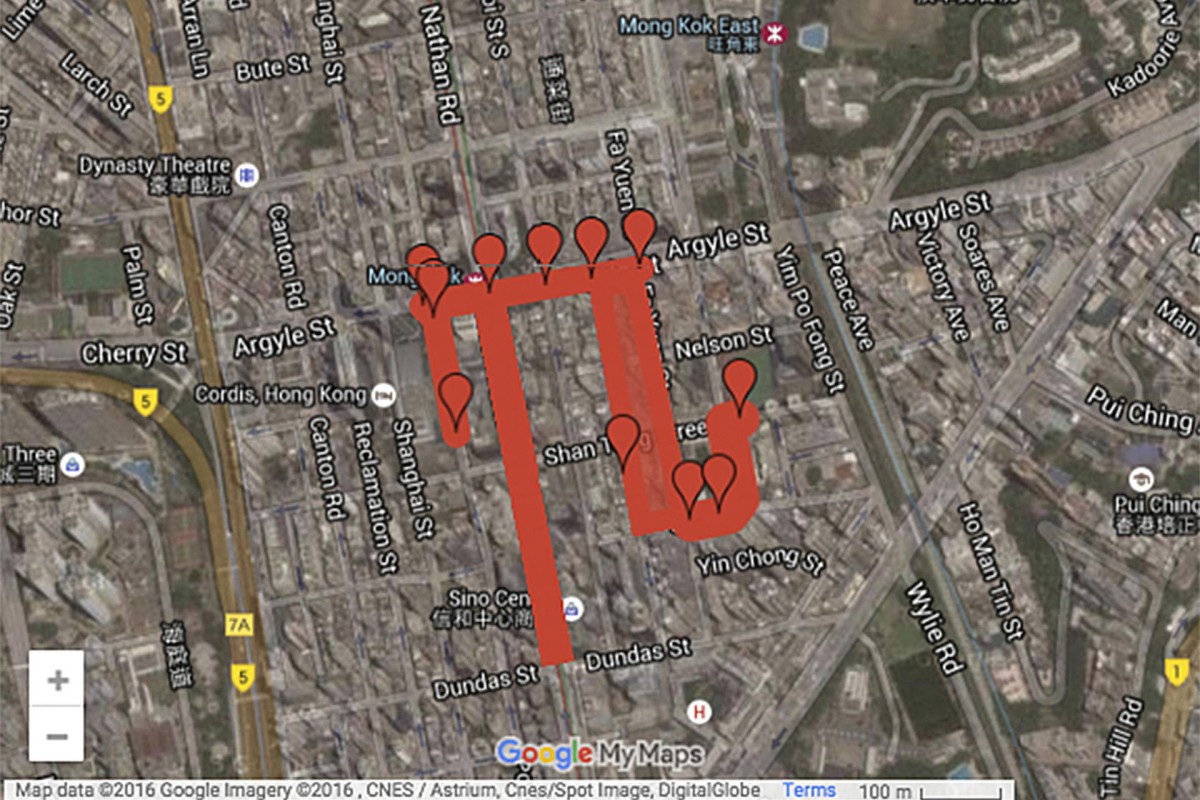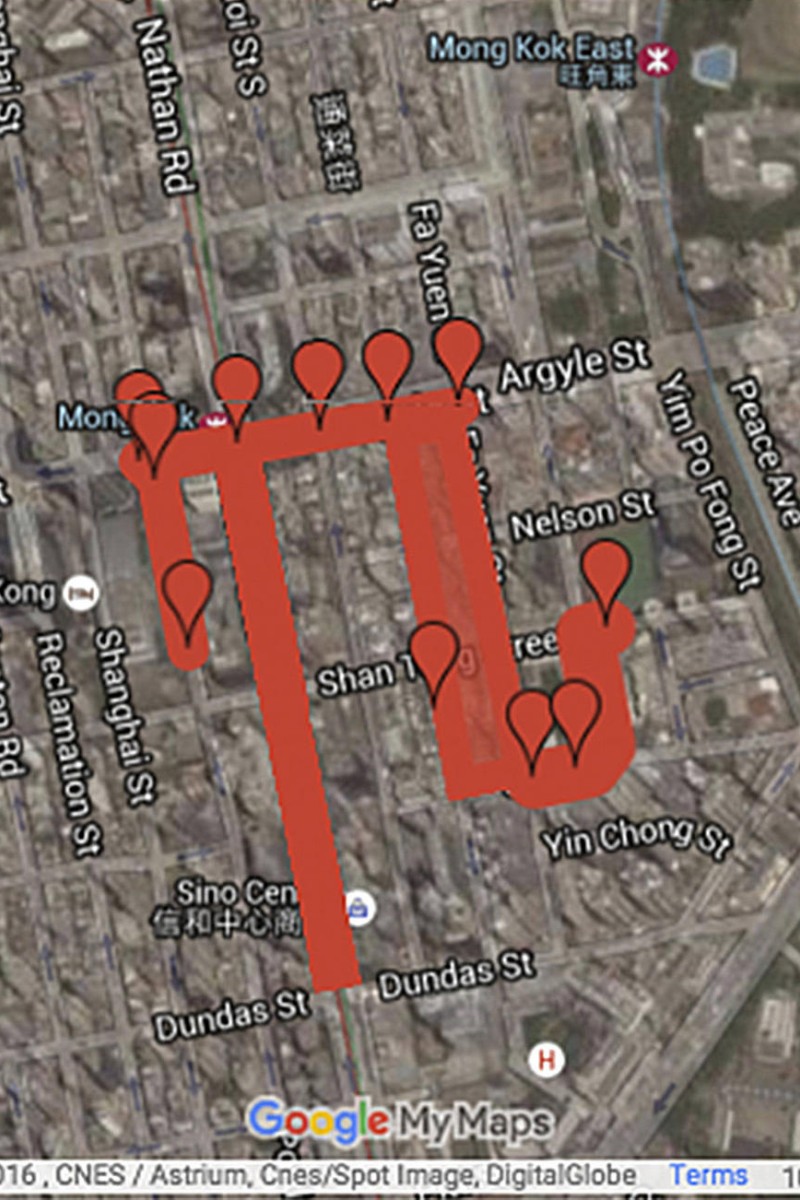
The Mong Kok riot on Monday night brought a level of violence to Hong Kong's streets which has not been seen for decades. This is what we know:
The overnight unrest started when Food and Environmental Hygiene Department officers were hit by objects as they tried to clear a group of unlicensed hawkers on Portland Street at 10pm. Their attempts turned the growing crowd rowdy because hawkers had always been allowed to sell during the Lunar New Year. Health minister Dr Ko Wing-man said a crowd surrounded the hygiene officers and tried to push a cart of boiling oil towards them.
The hygiene officers could not control the situation and called the police.
Police arrived but a standoff ensued, during which the protesters stopped a taxi from leaving the area. The police appeared to retreat and things seemed to simmer down. The crowd went about buying their street food. They were puzzled when the police returned.
The police brought a platform for their officer to stand on, and were surrounded by protesters. The situation was relatively calm. A police negotiator spoke to Ray Wong Toi-yeung, leader of the localist group Hong Kong Indigenous, saying they would allow the hawkers to continue selling, as long as things remained peaceful. But the crowd turned on the police, shouting in Cantonese that they could not be trusted.
Police reinforcements massed on Portland Street. Using pepper spray and batons they pushed the crowd out to Argyle Street. The crowd grew angrier and started throwing objects like stones and pallets, the wooden beds on which goods are transported.
At around 2am, police began losing control of the crowd, which poured out of the side street and onto Argyle Street and Nathan Road. At first, the only police on Argyle Street were traffic officers. They were soon overwhelmed by the mob.
The rioters tried to block the street.
When a senior traffic officer was hit by flying debris and fell, the mob continued to pelt him with stones and bricks. One of his colleagues drew his pistol and fired two shots into the air.
At 2.16am, HK Indigenous posted on Facebook that their leader, and election representative, Edward Leung Tin-kei had been arrested.
The mob moved on to Nathan Road, which was later blocked.
The first of the multiple fires started at Sai Yeung Choi Street South at around 4am. Protesters set up more fires at various spots throughout the early hours throughout the morning.
Following yet another long standoff, at around 7am protesters were dispersed at Soy Street near Fa Yuen Street by police officers in Police Tactical Unit uniform.
Streets calmed as cleaners moved in to sweep away bricks and bottles from street fights.
Mong Kok MTR station reopened at around 9.45am.
The different perspectives:
Hawker's view
Hawker Chan Kong-chiu, who started out as an "on-the-run" illegal hawker in 1977 before becoming licensed to operate in Fa Yuen Street, said he did not think hawkers were involved in the violence.
"The hawkers don't want trouble. They just want to make a living. I think things escalated because the young people who were about didn't like to see how even on New Year's Day hawkers are harassed. They became a bit hot-headed," he said.
The hawkers not only reflected the shared history of the city, said Chan, but offered a cheap meal option for the working class.
Journalist's view
Cable TV news cameraman Cheng Hon-keung was in the thick of the action when bricks and debris began flying above him. He had been repeatedly told by rioters not to film them throwing or picking up projectiles. To keep a low profile, Cheng said he even turned off his camera flash.
Despite wearing a helmet and a reporter's vest and hiding in a corner, he was hit by a flying brick "from out of nowhere" in the left side of his jaw. "I was already hiding in the corner, and it just came flying towards me - sideways," he said outside Queen Elizabeth Hospital in Yau Ma Tei
Police's view
Hong Kong's police chief Stephen Lo Wai-chun defended the policeman who fired the two shots.
"Rioters attacked a police officer with hard objects and threatened his life. He fell on the ground and kept being attacked by the rioters," Lo said.
"My colleague used his firearm in accordance with the use of force principle to prevent his colleague from further attacks and also for his own safety."
The police chief also rejected accusations that his officers were ill-prepared for the riots and underestimated the gravity of the situation in leaving officers heavily outnumbered by hundreds of rioters.
Activist's view
Ray Wong Toi-yeung, Hong Kong Indigenous leader, took the lead in the riot. While standing on a trashed taxi, Wong asked protesters to rally more friends to join the riot. But Wong dismissed a claim by police commissioner Stephen Lo Wai-chung that their acts were premeditated. He said they only started to get protective gear upon seeing police reinforcements.
"All the [resources] were protective in nature," Wong insisted on Tuesday.
